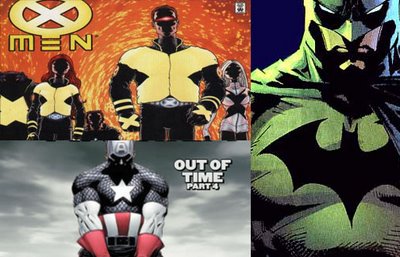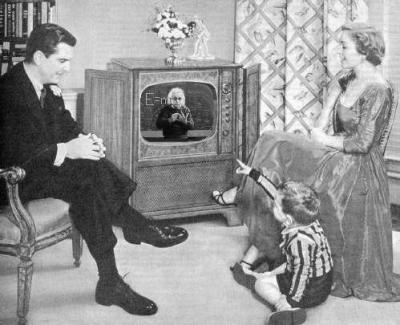
If you've been to the cinema recently, chances are you've caught one of the trailers for the new Superman flick. For most of you, it's probably just one more disposable, popcorn piece of fluff. But for a few, it's something more. Because, for us übergeek funnybook lovers, Superman is part of an iconic language that communicates something about our world that we find so hard to define.
Sure, it's about superheroes. But there's something more powerful at work, too. It's about images. It's about icons. It's about myth.
It's these icons, secular symbols of an irreligious faith, that energize the mythologies Americans have created for themselves in the sequential arts.
You've got to remember one thing about this country. We have no ancient myths. The old Western mythologies -- Artemis, Apollo, Bacchus, Diana, Sigurd, Fria, Arthur -- they were never ours. We left them behind in Europe. We left them behind in the wake of the Enlightenment. We left them behind in our desire to create a new world all our own.
And the myths of this continent -- the myths of those who were here before us -- were crushed to dust under the new American ideals of progress, uniformity and industry. Stamped down and put out before we ever had the chance to explore them.
Our first national myths were pseudo-historical tales of very real men -- Washington, Lincoln, Roosevelt. But these myths were both too true and yet not true enough. These figures were written in the granite of historical fact. No matter how we dressed them up, they were never mythic enough to express every truth we sought to articulate.
So we created them. Supermen. Superman. Symbols. Not real men. Those weren't working well enough. But symbols of truth. Symbols of justice. Symbols of the American way. Symbols of determination, grit, and above all, nobility of character.
This was the first symbol of the our new mythology. But it wouldn't be the last. Just as religions have used icons in liturgical worship for centuries, our new American myths needed symbols and icons of their own. The Bat. The Captain. The X.
America, especially 20th century America, had grown too fast -- moving from a loose collection of colonies to global superpower in less than 150 years. We bought the Mississippi, forged a way across the Rockies, built a railroad from ocean to ocean, became the breadbasket and factory of the world in such a short time, that we didn't have the time to develop the mythologies of the past world powers -- the British, the Hapsburg, the Ottomans, the Romans, the Greeks. We went from something to nothing virtually overnight.
And we've spent the last 75 years trying to backpedal our way to a true American mythology. A mythology not bound by the constraints of history and scientific fact -- but a mythology that expresses American ideals without compromising those ideals by attaching them to actual, historical figures.
One of my favorite storytellers liked to say that myths are nothing more than "lies breathed through silver." They are, on the one hand, completely untrue. But on other hand, they express truths about ourselves that are otherwise inexpressible. They are breathed through the silver of the collective religious/secular ideal. Every American stands for truth and justice. But no one American stands for them in their most complete sense.
Hence, Superman.
These symbols mean something. They mean something because we give them meaning, breathing the truth into them with our stories and parables. They certainly are kids' stuff. But that are not just kids' stuff.
They are, at their most basic, the stuff of legends. The stuff of myths. The stuff of dreams.
They are truth. And they are true because of what they reflect. They are true because in the telling, they gain meaning.
Wednesday, May 10, 2006
Superman and Icons and These Myths We Make
Posted by
jonny
at
12:52 AM
![]()
Subscribe to:
Post Comments (Atom)




No comments:
Post a Comment